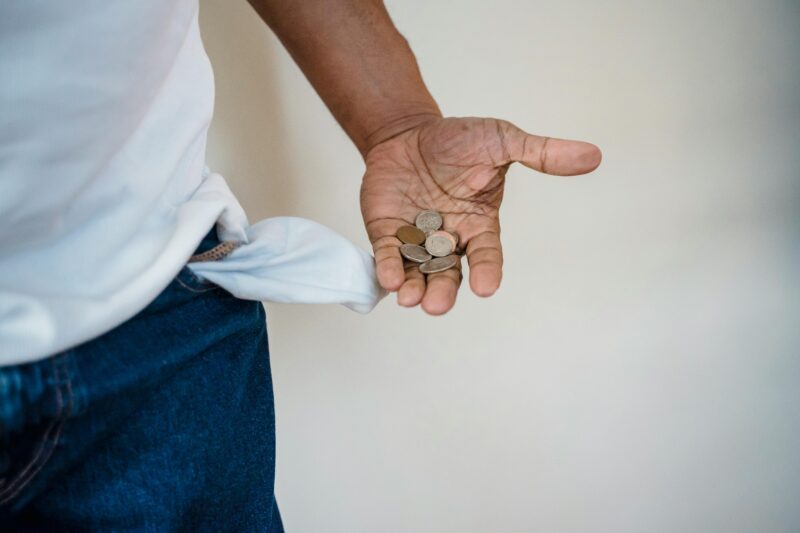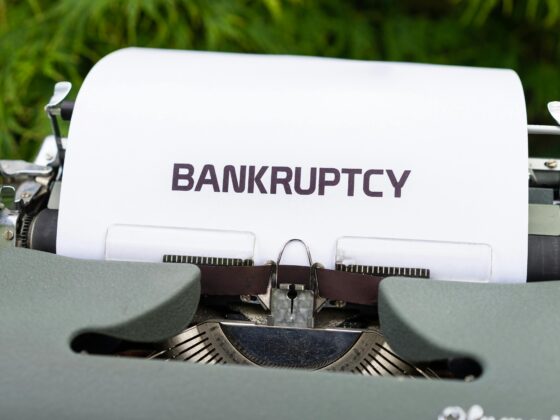I Am Broke and In Debt. What to Do When You’re Completely Broke: A Complete Survival and Recovery Guide

| i am broke and in debt |
The pit in your stomach is unmistakable. That 3 AM wake-up call when reality crashes over you like a cold wave: you’re completely broke. Your bank account shows zeros, bills are stacking up, and the overwhelming weight of financial desperation feels suffocating. If you’re reading this in that dark moment, know that you’re not alone, and more importantly, there is a way forward.
Being broke isn’t just about empty bank accounts—it’s about the crushing anxiety, the shame, and the feeling that your life is spiralling beyond your control. But here’s what financial advisors and millions of people who’ve recovered from being broke want you to know: this situation is temporary, fixable, and doesn’t define your worth or your future.
This comprehensive guide will show you exactly what to do when you’re completely broke, providing immediate survival strategies and long-term recovery plans that work in 2025’s challenging economic landscape.
Understanding What “Completely Broke” Really Means
Before diving into solutions, it’s crucial to understand the difference between being broke and being in debt. Many people use these terms interchangeably, but they represent distinctly different financial situations requiring different approaches.
When you’re broke:
- You have no money in checking or savings accounts
- You cannot pay for basic necessities like food, rent, or utilities
- You’ve exhausted available credit and cannot take on new debt
- You may still have assets but lack liquid cash
- Your immediate focus is survival and basic needs
When you’re in debt:
- You owe money but may still have income and some financial resources
- You’re paying interest on existing obligations
- You may be juggling payments and making minimum amounts
- Your focus is on debt management and payoff strategies
Understanding this distinction is important because the strategies for each situation differ significantly. According to financial experts, when you’re truly broke, “you really only have three viable options: You can increase your income, cut back on expenses, or renegotiate payback terms with creditors.”
The Psychology of Being Broke: Why Your Mind Matters Most
Breaking Through Financial Shame
One of the biggest barriers to recovering from being broke is the psychological burden it creates. Financial shame can paralyse decision-making and prevent you from taking necessary action. Here’s the truth: Financial challenges are more common than ever, with experts noting that “things right now are way different (and way worse) than they used to be.”
Common psychological reactions to being broke:
- Overwhelming shame and embarrassment
- Paralysis and avoidance behaviours
- Depression and anxiety
- Isolation from friends and family
- Loss of self-worth and identity
Reframing your mindset: Instead of viewing your situation as a personal failure, recognise it as a temporary circumstance that requires strategic action. Millions of successful people have been exactly where you are right now, and they’ve built wealth from this starting point.
The Broke Mindset vs. Recovery Mindset
Broke mindset:
- “I’ll never recover from this”
- “I’m bad with money”
- “This is hopeless”
- “Everyone else has it figured out”
Recovery mindset:
- “This is temporary and solvable”
- “I’m learning valuable financial skills”
- “Every small step matters”
- “Many people face financial challenges”
Step 1: Take Control Through Radical Honesty and Assessment
Face Your Financial Reality Without Judgment
The first step to climbing out of financial rock bottom is conducting a completely honest assessment of your situation. This means confronting uncomfortable truths without sugar-coating or minimising the reality.
Complete your broke assessment:
Document your exact financial position:
- Check all bank account balances (checking, savings, hidden accounts)
- List all cash you have access to (wallet, change jar, emergency stashes)
- Identify any assets you could quickly liquidate
- Calculate exactly how much money you need for immediate survival
Create your 30-day survival budget:
- Housing: rent, mortgage, or immediate shelter needs
- Utilities: electricity, gas, water, phone
- Food: absolute minimum grocery needs
- Transportation: gas or public transit for essential trips
- Medical: prescription medications and urgent care
Assess your immediate timeline:
- How long can you survive on current resources?
- What bills are due in the next 7, 14, and 30 days?
- Which expenses will have the most severe consequences if unpaid?
Stop the Financial Bleeding Immediately
Once you’ve assessed your situation, take immediate action to prevent it from worsening:
Cease all non-essential spending:
- Cancel or pause subscriptions and memberships
- Stop eating out completely
- Avoid any purchases that aren’t survival-essential
- Remove payment methods from online shopping accounts
Prioritise your expenses using the hierarchy of needs:
- Shelter (rent/mortgage)
- Utilities (especially heat and electricity)
- Food
- Transportation for work
- Essential medications
- Minimum debt payments
- Everything else
Step 2: Generate Immediate Income Through Emergency Hustling
When you’re broke, waiting for the perfect job opportunity is a luxury you can’t afford. You need income now, even if it’s temporary or below your usual standards.
Immediate Income Opportunities
Same-day income possibilities:
Gig economy work:
- Rideshare driving (Uber, Lyft) if you have a vehicle
- Food delivery (DoorDash, Uber Eats, Grubhub)
- Task-based work (TaskRabbit, Handy)
- Grocery shopping services (Instacart, Shipt)
Quick service jobs:
- Day labour opportunities
- Temporary staffing agencies
- Restaurant work (many hire quickly)
- Retail positions during busy seasons
Sell everything non-essential:
- Electronics you can live without
- Clothing, shoes, and accessories
- Books, games, and collectables
- Furniture you don’t absolutely need
- Use Facebook Marketplace, Craigslist, or pawn shops for quick sales
Leverage your skills immediately:
- Freelance writing, design, or programming
- Tutoring or teaching (even via video calls)
- Pet sitting or dog walking
- House cleaning or yard work
- Handyman services
Modern Technology Solutions for Quick Income
Micro-task platforms:
- Amazon Mechanical Turk
- Swagbucks for small online tasks
- UserTesting for website feedback
- Rev.com for transcription work
Creative income streams:
- Stock photography if you have a decent camera
- Online courses if you have expertise to share
- Social media management for small businesses
- Virtual assistance services
Step 3: Master Survival-Mode Budgeting
When you’re broke, traditional budgeting advice doesn’t apply. You need survival-mode strategies that focus on absolute necessities.
The Bare-Bones Survival Budget
Redefine “necessities” drastically:
Food:
- Rice, beans, pasta, and potatoes as staples
- Eggs, peanut butter, and canned vegetables for protein and nutrients
- Shop discount stores and use food banks without shame
- Learn to cook everything from scratch
- Target $50-75 per week maximum for a single person
Housing:
- Consider getting roommates immediately
- Explore renting out parking spaces or storage areas
- Look into house-sitting opportunities
- Investigate transitional housing programs if necessary
Transportation:
- Use public transportation exclusively if possible
- Walk or bike whenever feasible
- Carpool or rideshare to work
- Consider whether you can afford to maintain a vehicle
Utilities:
- Use heating and cooling minimally
- Unplug devices when not in use
- Consider whether you need internet at home (use public WiFi)
- Look into utility assistance programs
Emergency Expense Management
The $1 rule: Before spending any dollar, ask: “Will spending this dollar help me earn more money or prevent a catastrophic expense?” If the answer is no, don’t spend it.
Create a priority payment system:
- Income-generating expenses (gas to get to work)
- Shelter security
- Basic utilities
- Minimum food requirements
- Everything else
Step 4: Access Emergency Assistance and Resources
There’s no shame in using available assistance when you’re in survival mode. These programs exist specifically for situations like yours.
Government Assistance Programs
Immediate needs assistance:
Supplemental Nutrition Assistance Program (SNAP):
- Provides monthly benefits for food purchases
- Contact your local social services department or call 211 for application assistance
- Many areas allow online applications
Temporary Assistance for Needy Families (TANF):
- Provides cash assistance for basic living expenses and operates through state-specific programs
- Requirements vary by state but generally include work requirements or job training
Medicaid:
- Emergency healthcare coverage
- Essential for preventing medical debt from worsening your situation
Utility assistance programs:
- Low Income Home Energy Assistance Program (LIHEAP)
- State and local utility assistance programs
- Emergency utility shut-off prevention programs
Community and Religious Resources
Local assistance options:
Food assistance:
- Food banks and pantries (no income verification required)
- Soup kitchens and community meals
- Religious organisations offering food assistance
- School meal programs if you have children
Housing assistance:
- Emergency rental assistance programs that “have helped to prevent millions of evictions”
- Transitional housing programs
- Emergency shelter systems
- Utility deposit assistance programs
211 Services: The 211 system connects you to local resources for:
- Emergency financial assistance
- Food assistance
- Housing help
- Utility assistance
- Transportation programs
- Job training and placement services
Emergency Financial Assistance
Crisis intervention programs:
- Salvation Army emergency assistance
- Local churches and religious organisations
- Community action agencies
- United Way emergency funds
- Red Cross disaster assistance (if applicable)
Step 5: Negotiate and Communicate with Creditors
When you’re broke, communication with creditors becomes crucial. Hiding from your obligations will only make the situation worse.
The Art of Creditor Communication
Before you call:
- Prepare a clear explanation of your situation
- Know exactly how much you owe and to whom
- Have a proposed payment plan ready
- Document everything in writing
What to say: “I’m experiencing a temporary financial hardship due to [specific reason]. I want to pay my obligations but currently cannot make the full payment. I’d like to discuss options that might be available.”
What to ask for:
- Payment deferrals or forbearance
- Reduced payment plans
- Interest rate reductions
- Hardship programs
- Settlement options (for seriously delinquent accounts)
Specific Creditor Strategies
Credit cards:
- If you can’t make minimum payments, “call your credit card company and tell them you need help”
- Ask about hardship programs that may reduce or pause payments
- Request interest rate reductions
Student loans:
- Apply for forbearance or deferment
- Explore income-driven repayment plans
- Consider consolidation options
Rent and mortgage:
- Communicate with landlords before missing payments
- Explore rental assistance programs
- For mortgages, contact your servicer about modification options
Utilities:
- Many utility companies have hardship programs
- Look into budget billing plans
- Ask about emergency assistance funds
Step 6: Rebuild Your Foundation for Long-Term Recovery
Emergency Fund Building While Broke
This might sound impossible, but building an emergency fund should begin immediately, even when you’re broke. Financial experts recommend saving “about 3 to 6 months of living expenses for a rainy day fund,” but when you’re broke, start with any amount.
The broke person’s emergency fund strategy:
- Save loose change daily
- Set aside $1 from any extra income
- Use cash-back rewards from necessary purchases
- Save tax refunds or any windfalls immediately
- Target your first $100, then $500, then $1000
Skill Development for Income Increase
Immediate skill-building priorities:
- Learn high-demand digital skills (social media management, basic web design)
- Improve existing skills that could earn freelance income
- Take advantage of free online courses (Coursera, Khan Academy, YouTube)
- Attend free workshops at libraries and community centres
Long-term education strategies:
- Research job training programs that offer living stipends
- Look into trade school programs with job placement assistance
- Consider certifications in growing fields
- Network within industries that interest you
Building Multiple Income Streams
The broke person’s approach to diversification:
- Start with one primary income source for stability
- Add one small additional stream (like weekend gig work)
- Gradually build 3-4 income sources for security
- Focus on income streams that can grow over time
Step 7: Prevent Future Financial Catastrophe
Financial Literacy for Broke People
Essential money management skills:
- Basic budgeting and expense tracking
- Understanding debt and interest rates
- Learning about credit scores and reports
- Basic investment principles for when you have money again
Free financial education resources:
- Library financial literacy programs
- Online courses from reputable financial organisations
- Government financial education websites
- Community college personal finance classes
Creating Your Financial Recovery Timeline
Months 1-2: Survival mode
- Secure basic needs (food, shelter, safety)
- Establish income streams
- Access emergency assistance
- Communicate with all creditors
Months 3-6: Stabilisation
- Build small emergency fund ($250-$500)
- Establish more reliable income
- Create sustainable spending habits
- Begin addressing debts systematically
Months 7-12: Growth foundation
- Increase emergency fund to $1000+
- Develop additional skills or income sources
- Start planning for long-term financial goals
- Build credit if necessary
Year 2 and beyond: Wealth building
- Substantial emergency fund (3-6 months’ expenses)
- Debt elimination strategies
- Retirement planning
- Investment education and implementation
Common Mistakes to Avoid When You’re Broke
Mistake 1: Waiting for Perfect Solutions
When you’re broke, “good enough” solutions implemented immediately are better than perfect solutions you never start. Take imperfect action rather than remaining paralysed by analysis.
Mistake 2: Maintaining Lifestyle Out of Pride
Pride is expensive when you’re broke. Instead of isolating yourself, “invite friends over for a BYOB and BYO-food game night” rather than expensive outings you can’t afford.
Mistake 3: Not Accessing Available Help
Many people refuse assistance due to pride or shame. Remember: these programs exist for exactly your situation, and using them is smart resource management, not a character flaw.
Mistake 4: Creating New Debt to Solve Immediate Problems
While it might be tempting to use credit cards or loans for immediate relief, this often makes the situation worse long-term. Focus on increasing income and accessing assistance instead.
Mistake 5: Not Communicating with Creditors
Avoiding creditors makes them assume you’re unwilling to pay rather than unable to pay. Communication keeps more options available to you.
Mental Health and Emotional Survival Strategies
Coping with Financial Trauma
Being broke creates real psychological trauma that needs attention:
Daily mental health practices:
- Practice gratitude for small improvements
- Maintain social connections despite financial constraints
- Exercise regularly (walking is free)
- Stick to sleep schedules despite stress
Free mental health resources:
- Community mental health centres
- Crisis hotlines for immediate support
- Support groups for financial recovery
- Religious organisations offering counselling
Maintaining Hope and Motivation
Celebrating micro-victories:
- Acknowledge every dollar earned or saved
- Recognise progress in building new habits
- Celebrate successful creditor negotiations
- Document your recovery journey
Visualisation and goal-setting:
- Write down specific financial goals
- Create vision boards for your debt-free future
- Read success stories of others who’ve recovered
- Connect with mentors who’ve overcome similar challenges
Technology Tools for Broke People
Free Financial Management Apps
Budgeting and tracking:
- Mint for expense tracking
- YNAB (often offers free trials for people in crisis)
- PocketGuard for spending limits
- Goodbudget for envelope budgeting
Income generation apps:
- Steady for finding gig work
- JobSpotter for reporting job listings
- Gigwalk for location-based tasks
- Field Agent for mystery shopping tasks
Leveraging Technology for Savings
Money-saving apps:
- Honey for online coupon codes
- Rakuten for cash-back on necessary purchases
- GasBuddy for finding cheapest gas prices
- Flipp for comparing grocery store prices
Creating Your Support Network
Building Your Recovery Team
Essential team members:
- Accountability partner for financial progress
- Mentor who has overcome financial hardship
- Professional counsellor or financial advisor (when affordable)
- Trusted friends or family for emotional support
Community connections:
- Join financial recovery support groups
- Participate in online communities focused on financial recovery
- Attend free community events to maintain social connections
- Volunteer for organisations (builds network and skills)
The Path Forward: Your Broke-to-Thriving Journey
Being completely broke feels like the end of the world, but it’s actually a profound opportunity for financial education and personal growth. Every millionaire has a story of financial struggle, and many of the strongest financial habits are formed during the most challenging times.
Remember these truths:
- Your current situation is temporary
- Small actions compound into big results
- You have more resources available than you realize
- Millions of people have recovered from being broke
- This experience is teaching you invaluable life skills
Your recovery focus:
- Immediate survival and safety
- Quick income generation
- Resource utilisation and assistance access
- Foundation building for long-term success
- Skill development for future opportunities
The journey from broke to financially stable isn’t easy, but it’s absolutely achievable. Every day you take positive action, no matter how small, you’re moving closer to financial security and freedom.
As debt relief programs continue to evolve through 2025, “shaped by post-pandemic economic recovery,” there are more resources and opportunities available than ever before for people ready to take action.
Your story doesn’t end with being broke—it begins with your decision to fight back, to use available resources, and to build something better. The person you become through this recovery process will be stronger, wiser, and more financially capable than you were before this challenge began.
Start today. Start now. Your future self is counting on the courage and action you take in this moment.








